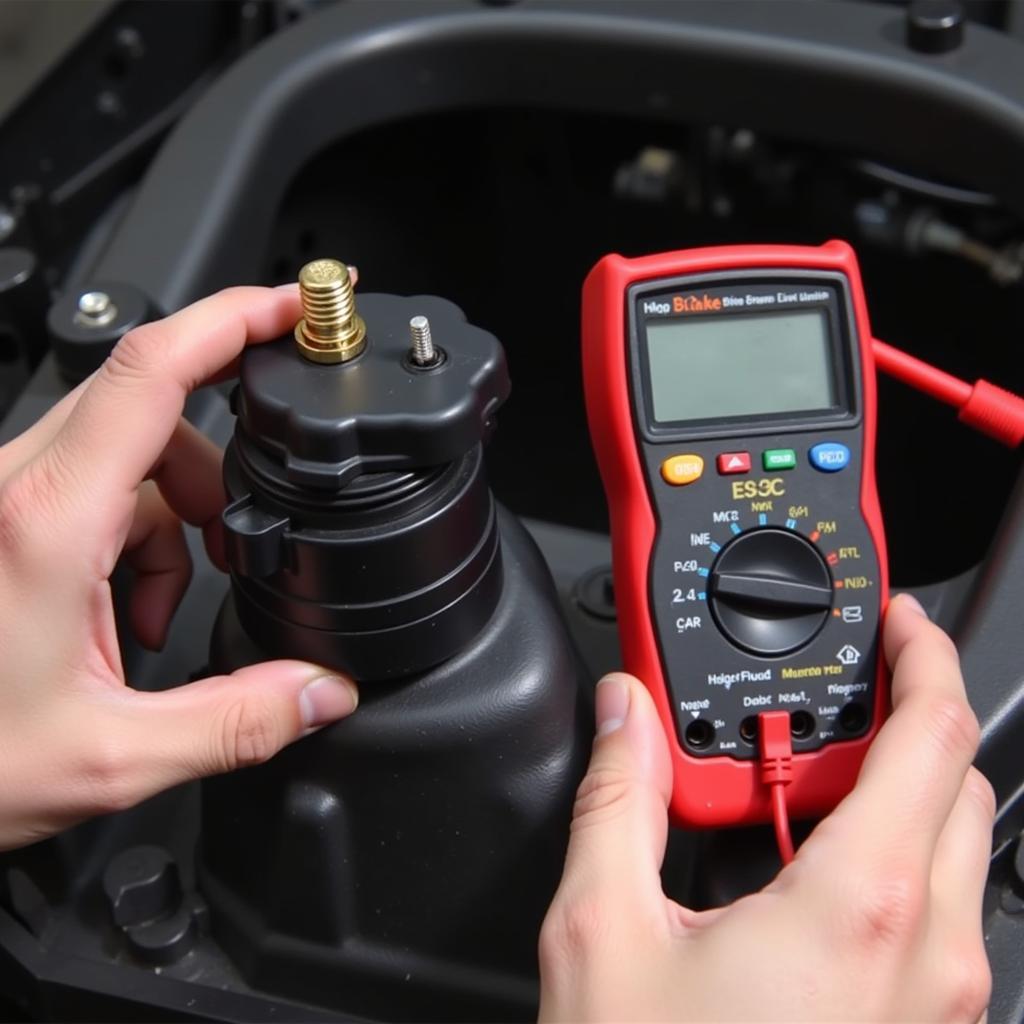The seat belt warning relay is a critical component of your vehicle’s safety system, reminding you and your passengers to buckle up. When functioning correctly, this relay activates a chime or warning light if the seat belts are not fastened after the ignition is turned on. However, like any electrical component, this relay can malfunction, leading to frustrating issues.
This comprehensive guide delves into the intricacies of the seat belt warning relay, covering common problems, troubleshooting tips, and potential solutions.
What is a Seat Belt Warning Relay and How Does It Work?
At its core, the seat belt warning relay is an electromagnetic switch. It receives signals from the seat belt buckle sensors and the ignition switch. When you start your car, the ignition switch sends a signal to the relay. If the seat belt buckles are not fastened, the sensors send a signal to the relay, which then completes the circuit and activates the warning chime or light. Once you buckle up, the circuit is broken, and the warning ceases.
Common Seat Belt Warning Relay Problems
A malfunctioning seat belt warning relay can manifest in several ways:
- Continuous Chime/Light: The most common issue is a persistent chime or warning light even when all seat belts are fastened. This could be due to a faulty relay stuck in the closed position, constantly sending a signal to the chime/light.
- Intermittent Chime/Light: An intermittent chime or flickering light suggests a loose connection or a failing relay that only works sporadically.
- No Warning: The absence of any warning chime or light when seat belts are unfastened indicates a potentially serious problem. This could mean the relay is completely dead, the wiring is damaged, or there’s a fault with the sensors.
Troubleshooting a Seat Belt Warning Relay
Before assuming the relay is faulty, it’s crucial to rule out other possibilities:
- Check the Seat Belt Buckles: Ensure all buckles are properly latched. Sometimes, a foreign object or dirt in the buckle mechanism can prevent it from making proper contact.
- Inspect the Wiring: Visually inspect the wiring harness connected to the seat belt buckles and the relay for any damage, loose connections, or corrosion.
- Test the Seat Belt Sensors: A multimeter can be used to test the continuity of the seat belt buckle sensors. If a sensor shows no continuity when the buckle is unfastened, it likely needs replacement.
Replacing a Seat Belt Warning Relay
If troubleshooting suggests a faulty relay, replacing it is often a straightforward process:
- Locate the Relay: The seat belt warning relay is usually located in the fuse box, either under the dashboard, in the engine bay, or in the trunk. Consult your vehicle’s owner’s manual for the precise location.
- Identify the Correct Relay: Relays are typically labeled on the fuse box cover. If not, refer to your owner’s manual for the correct relay identification.
- Remove and Replace: Carefully remove the old relay by gently pulling it straight out. Align the prongs of the new relay with the socket and push it in until it clicks.
When to Seek Professional Help
While troubleshooting and replacing a seat belt warning relay can be a DIY task for some, certain situations warrant professional assistance:
- Complex Electrical Issues: If the problem persists after basic troubleshooting, there might be a more complex electrical issue requiring specialized diagnostic tools.
- Airbag System Integration: In some vehicles, the seat belt warning system is integrated with the airbag system. Tampering with this system without proper knowledge can be dangerous.
- Lack of Experience: If you are uncomfortable working with electrical components, it’s best to leave it to the professionals to avoid potential damage to your vehicle’s electrical system.
Seat Belt Warning System: Essential for Safety
“Remember,” says John Smith, a seasoned automotive electrician, “a properly functioning seat belt warning system is not just about avoiding annoying chimes—it’s about reminding you and your passengers to prioritize safety. Don’t ignore persistent issues, address them promptly.”
The seat belt warning relay plays a vital role in your car’s safety system. Understanding its function, potential issues, and solutions empowers you to address problems proactively. While simple troubleshooting can often resolve minor issues, don’t hesitate to seek professional help when needed. After all, a fully functional seat belt warning system contributes significantly to a safer driving experience for everyone.

